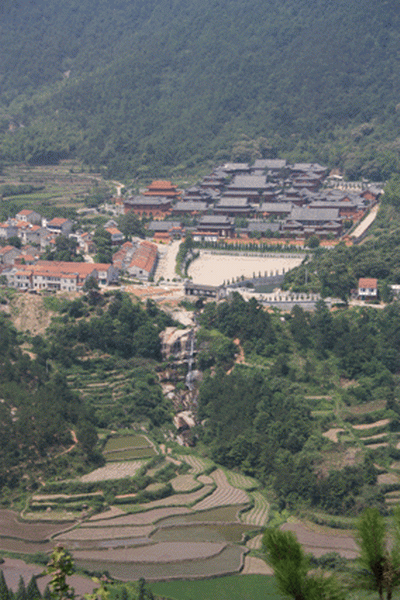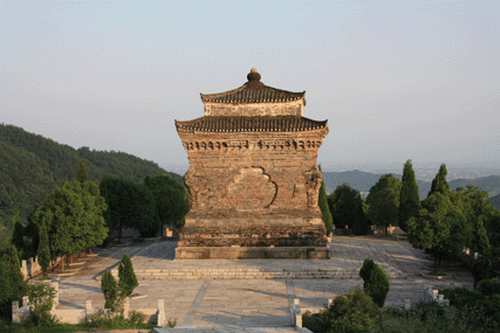Sizu Temple
( chinadaily.com.cn )
|
|||||||||
 |
|
It was founded in AD 624, during the reign of Emperor Wude of the Tang Dynasty. |
Sizu (fourth ancestral) Temple, also known as Zhengjue Temple and Shuangfeng Temple, was founded in AD 624, during the reign of Emperor Wude of the Tang Dynasty. With a 1,400 year history, the temple plays a role in Chinese Buddhist history and is held in high regard by Japan, India and Southeast Asian countries.
According to historical records, the temple was established by Master Daoxin, the fourth generation abbot of Zen Buddhism. The temple was in operation from the Tang to Qing dynasties, and in full flourish during the Tang and Song dynasties. It had over 800 halls and pavilions, and was home to 1,000 monks. Each year, tens of thousands of pilgrims came to the temple for worship.
 |
| A bird's eye view of the Sizu Temple |
Over the centuries, the temple has gone through all the vicissitudes of life. It was destroyed and reconstructed. Now, there are only a dozen of halls and pavilions of historical significance and aesthetic beauty.
 |
|
Now, there are only a dozen of halls and pavilions of historical significance and aesthetic beauty. |
The most famous scenic spots include Luban Pavilion, Lingrun Bridge, Bharhut Tower, Purple Cloud Cave, the Inverted Cedar, and Fly-over Pan.
 |
| Lingrun Bridge |
Since opening up and receiving conservation efforts, Sizu Temple has joined the Buddhism tourism network, connecting with Shaolin Temple in Henan province, Erzu Temple in Anhui province and, Sanzu Temple to the north, Jiuhua Mountain to the east, adjoins Wuzu (five ancestral) Temple and Liuzu (six ancestral) Temple in Shaoguan city of Guangdong province to the south.
 |
| Lu Ban Pavilion |
 |
| Pilu Pavilion in afterglow |
 |
| Ciyun Archway |
